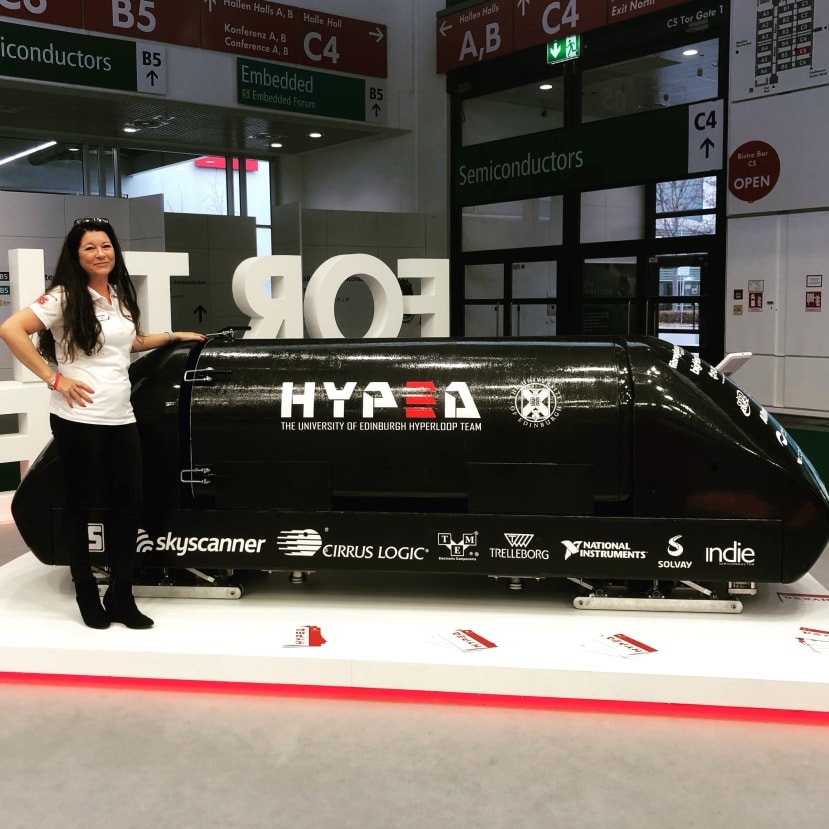International Civil Aviation Day
Follow articleHow do you feel about this article? Help us to provide better content for you.
Thank you! Your feedback has been received.
There was a problem submitting your feedback, please try again later.
What do you think of this article?
Today (7th December) is #CivilAviationDay and it’s got me thinking about how transport might look in the future of our increasingly high tech world. Before joining DesignSpark, I worked for 15 years at The Chartered Institute of Logistics and Transport, so I have a keen interest in both transport and technology.
I was surprised to learn that the International Civil Aviation Organization (ICAO) organised the very first Civil Aviation Day back in 1944, but it didn’t get recognised as an official UN holiday for another 50 years!
Given how aviation has revolutionised our world, surely we owe it to the ICAO, as well as flying pioneers such as the Wright Brothers and Amelia Earhart (among countless others) to take some time today to consider how incredibly far we have come, and in a relatively short period of time.
In doing so, you can’t help but wonder about potential transport systems of the future and what developments might be seen in another 100 years or so.
Supersonic flight
We had already advanced to supersonic flight with Concorde, but rising maintenance costs, high ticket prices and low passenger numbers meant it was retired in 2003. I was fascinated as a child by Concorde, but the closest I’ve been to one was at IWM Duxford which is home to a British preproduction testing model, Concorde G-AXDN, donated to the Duxford Aviation Society in 1977.
The number of passengers travelling on Concorde reduced significantly after an Air France Concorde crashed shortly after take-off in Paris in July 2000, killing all those on board. In addition, the 9/11 terror attacks in 2001 severely impacted the number of passengers wanting to fly.
As a result, after 27 years in service, British Airways and Air France retired the iconic Concorde. There are, however, some rays of hope for a super-fast transport future.
Virgin Atlantic originally expressed an interest in buying the Concorde fleet back in 2003, but no agreement was reached. Hope is not lost though, Sir Richard Branson did announce plans back in 2016 to launch a new supersonic passenger jet – somewhat strangely named Concorde II!
If this doesn’t work out, don’t worry, as a backup plan we have the collaboration between NASA and Lockheed Martin announced in September 2017, to develop their QueSST jet which could see us flying across the Atlantic in just 3 hours.
Transatlantic tunnel
If flying through the air at twice the speed of sound isn’t your bag, how about shooting under the waves in a near vacuum tunnel? No? You wouldn’t be tempted by the impossible-sounding promise of London to New York in just 54 minutes? I think I might be swayed!
We’ve talked about Hyperloop in some detail on DesignSpark, thanks to our friends on the University of Edinburgh’s HYPED team (see the picture of me below with HYPED’s Poddy Mc Podface at Electronica 2018!)
Well, the transatlantic tunnel idea would take the Hyperloop concept to another level of complexity by floating a 5,000 km tunnel about 50 metres below sea level, tethered to the seabed.
I just happened to catch the transatlantic tunnel episode of Extreme Engineering on Discovery Channel last weekend, but if you want to know more, you can watch the episode here.
Disrupting public transport and telecoms
Whilst considering our transport future, I came across a blog by Maarten Ectors, Chief Innovation Officer at Legal & General, on Linked In. Maarten is a friend of DesignSpark and a thought leader around innovation and disruptive technology. I just love Maarten’s take on the topic – How Musk’s companies and Netflix can disrupt telecom and public transport…
So, on #CivilAviationDay we are shouting out to all the mothers and fathers of aviation as we know it. We’re discussing the future of transport wherever it may take us – high-speed rail, maglev trains, transatlantic tunnel, Hyperloop systems the world over, subsonic aviation, or the return of supersonic travel in some form.
What are your thoughts on the future of travel? Will we be on or below the ground, high up in the sky, or even in the stratosphere (or beyond)? Join the debate in the comments section below.


